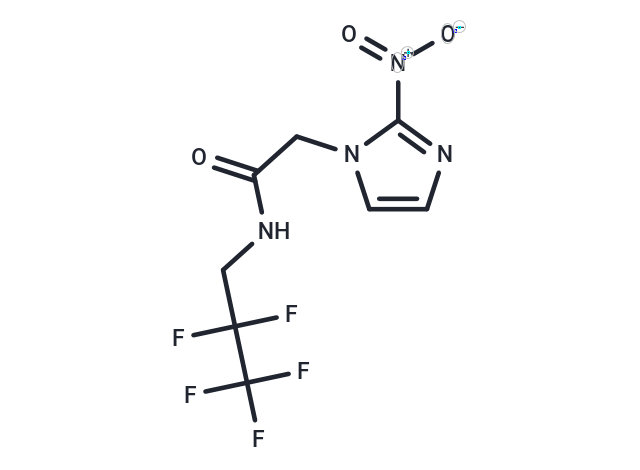Shopping Cart
- Remove All
 Your shopping cart is currently empty
Your shopping cart is currently empty

EF-5 (2-Nitroimidazole) is a agent of hypoxia labeling. It is used to identify hypoxia in cells.

| Pack Size | Price | Availability | Quantity |
|---|---|---|---|
| 5 mg | $43 | In Stock | |
| 10 mg | $73 | In Stock | |
| 25 mg | $148 | In Stock | |
| 50 mg | $238 | In Stock | |
| 100 mg | $353 | In Stock | |
| 200 mg | $493 | In Stock | |
| 1 mL x 10 mM (in DMSO) | $47 | In Stock |
| Description | EF-5 (2-Nitroimidazole) is a agent of hypoxia labeling. It is used to identify hypoxia in cells. |
| In vitro | EF-5 binding and metabolic reduction of the prodrugs are highly correlated in a panel of 14 hypoxic tumor cell lines. Overexpression of CYPOR causes similar 2- to 4-fold increases in EF-5 binding and metabolic reduction of tirapazamine and CEN-209 in SiHa and HCT116 cell lines. Which is similar enhancement of γH2AX formation.[1]. |
| In vivo | EF-5 binding is a promising stratification biomarker for benzotriazine-N-oxide bioreductive prodrugs. Binding and detection using a monoclonal antibody in 9L gliomas is specific and oxygen-dependent after intravenous injection of EF-5. Tumor hypoxia modification causes similar changes in the bioreductive activation of both agents, showing a strong correlation between EF-5 binding and CEN209-induced DNA damage at the individual tumor level [1]. Detection using fluorescence microscopy can be performed on frozen tissues, with tissue sections counterstained with haematoxylin and eosin for light microscopic analysis. The hypoxia distribution in a tumor can be inferred by examining individual tumor cells using flow cytometric techniques [2]. |
| Alias | EF5, 2-Nitroimidazole |
| Molecular Weight | 302.16 |
| Formula | C8H7F5N4O3 |
| Cas No. | 152721-37-4 |
| Smiles | [O-][N+](=O)c1nccn1CC(=O)NCC(F)(F)C(F)(F)F |
| Relative Density. | 1.66 g/cm3 (Predicted) |
| Storage | Powder: -20°C for 3 years | In solvent: -80°C for 1 year | Shipping with blue ice. | |||||||||||||||||||||||||||||||||||
| Solubility Information | DMSO: 125 mg/mL (413.69 mM), Sonication is recommended. | |||||||||||||||||||||||||||||||||||
Solution Preparation Table | ||||||||||||||||||||||||||||||||||||
DMSO
| ||||||||||||||||||||||||||||||||||||

Copyright © 2015-2024 TargetMol Chemicals Inc. All Rights Reserved.